
Asus Crosshair VI Hero Review
Manufacturer: AsusUK price (as reviewed): £259.99 (inc VAT)
US price (as reviewed): $254.99 (ex Tax)
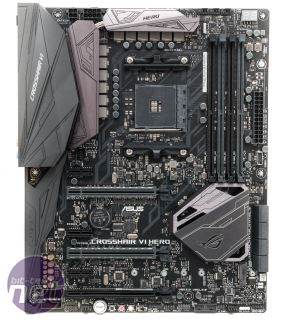 With the launch of Ryzen 7 CPUs now out of the way, we have time for evaluating motherboards. Such examination starts with looking at the first AM4 motherboard to enter our lab - the Asus Crosshair VI Hero.
With the launch of Ryzen 7 CPUs now out of the way, we have time for evaluating motherboards. Such examination starts with looking at the first AM4 motherboard to enter our lab - the Asus Crosshair VI Hero. There's something really important to realise about many AM4 boards we're seeing, which is that they are huge upgrades over their predecessors. The Crosshair V, for example, has a very dated design, no M.2 ports (or even U.2 or SATA Express) and nothing by way of USB 3.1 Gen 2 ports either. Things have been ticking over with AMD boards for years, so one question we did have when Zen and Ryzen started gaining traction in 2016 is just how capable and up-to-date the AM4 boards would be.
Thankfully, all of the above appears to have been rectified, which is brilliant news, because even if Ryzen was competitive and good value, if its motherboards were lagging behind in terms of features then this might have serious consequences for sales, especially at the high-end where M.2 SSDs especially are really taking off.
Click to enlarge
So, with the Crosshair VI Hero at least, you're not losing out in many ways to its similarly-priced Intel counterparts. In terms of pricing, this is very similar to the Maximus IX Hero (you have no idea how weird and nostalgic it feels to be comparing an Intel board with an AMD one, either), with the small exception that the latter sports two M.2 ports.
Click to enlarge
This seems to be the case with other AM4 boards, though, and while it would be nice to RAID two NVMe M.2 PCI-E SSDs, in reality we'd imagine most enthusiasts would be more than happy with one. The on-board audio has received a massive boost too - most high-end AM4 boards use the same Realtek ALC1220 audio codec as their Intel Z270 counterparts, including the Crosshair VI Hero, which features Asus' beefed-up version in the form of SupremeFX S1220.
Click to enlarge
Looking a bit further down the line, we understand that the range of mini-ITX motherboards that will sport the X300 chipset, will rely on the CPU for much of their features, such as USB ports. With ATX boards, including the Crosshair VI Hero, four USB 3 ports are provided via the CPU, with another six coming from the X370 chipset, which also dishes out Asus USB 3.1 Gen2 front panel header and six USB 2 ports, with two of those via a PCB header.
Click to enlarge
USB 3.1 Gen 2 Type-A and Type-C ports are provided by an ASMedia controller. All in all, the rear panel is bulging with USB ports and you get considerably more than the Maximus IX Hero, too. This due to the CPU providing the means for four USB 2.0 and four USB 3.0 - most likely the minimum we'll see from any AM4 board using a Ryzen CPU. You then get additional ports via the X370 chipset plus any third-party controllers.
Click to enlarge
As you'd expect from a £200+ ROG board, you get the full complement of overclocking and testing tools, including USB BIOS Flashback, which helped us out more than once with some teething problems we've had in our initial Ryzen testing. There's a CMOS clear switch, power and reset buttons plus an LED POST display, as well.
Click to enlarge
If you're planning some extreme overclocking then there's some additional CPU power available via a 4-pin header on the board plus LN2 and slow mode switches. For everyday exotic cooling, you get the same ROG Water Cooling Zone features, which comprise a pair of thermal probe headers for measuring coolant input/output temperatures plus a flow-rate sensor - the same as Asus' premium Intel Z270 offerings.
Click to enlarge
RGB lighting has found its way to AM4 too, with the Crosshair VI providing the usual pair of 4-pin RGB LED headers that support Asus Aura Sync, which matches lighting effects with the onboard lighting in the PCH and I/O shroud LEDs, separate LED strips and any Aura-compatible peripherals or graphics cards you might have. I/O lighting strip is made up of separate LEDs, but unlike the ROG Strix Z270 Gaming, there's no independent control for some funky rainbow effects - the Z270 Hero lacked this too though.
Click to enlarge
3D-printed object mount accessories are included in the box too as the Crosshair VI is compatible with several of the downloadable/printable objects in its online store, such as as the ATX cable cover and M.2 fan holder.
Specifications
- Chipset AMD X370
- Form factor ATX
- CPU support AMD Socket AM4 (Zen/Ryzen)
- Memory support Dual-channel, 4 slots, max 64GB
- Sound 8-channel SupremeFX S1220 Codec
- Networking Intel I211 Gigabit Ethernet
- Ports 1 x M.2 PCI-E 3.0 x4 32Gbps/SATA 6Gbps (up to 110mm), 8 x SATA 6Gbps via AMD X370, 1 x USB 3.1 Type-C, 1 x USB 3.1 Type-A, 10 x USB 3.0 (2 via header), 6 x USB 2.0 (2 via header), 1 x LAN, audio out, line in, mic, Optical S/PDIF out
- Dimensions (mm) 305 x 244
- Extras RGB LED extension cables, isolated audio circuitry, steel-plated PCI-E slots, 3D print mount

MSI MPG Velox 100R Chassis Review
October 14 2021 | 15:04

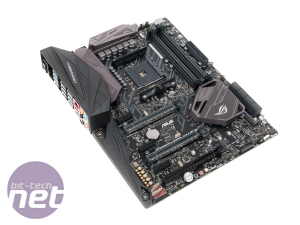
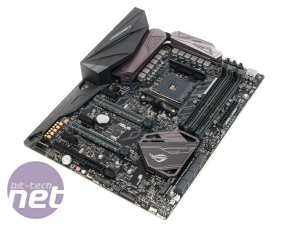
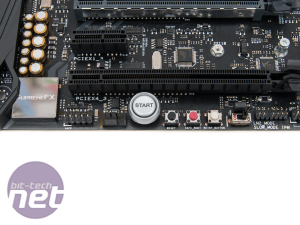
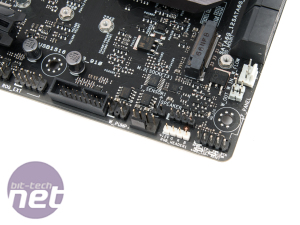
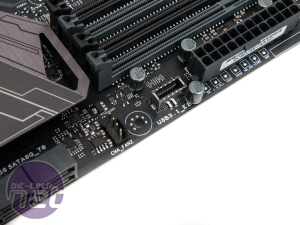
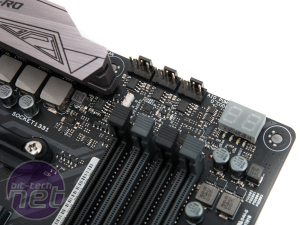
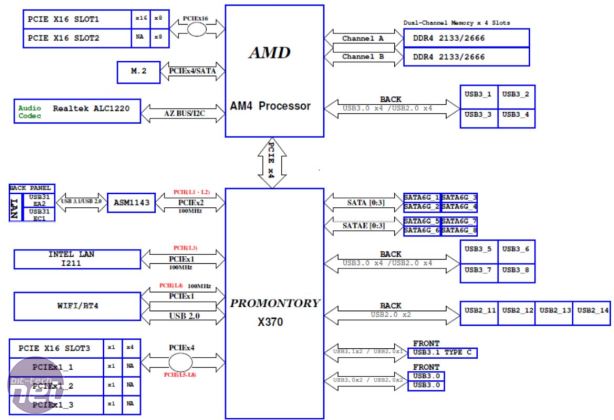


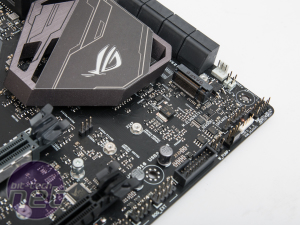

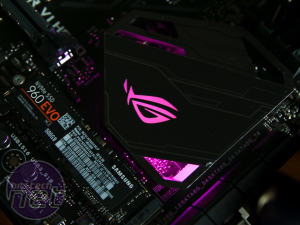
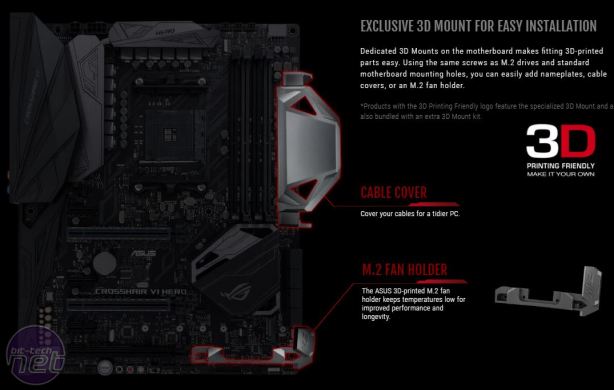
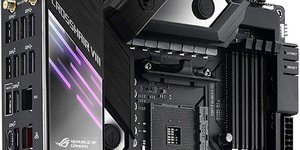
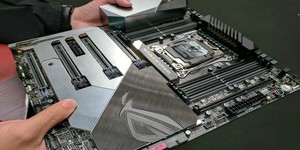





Want to comment? Please log in.